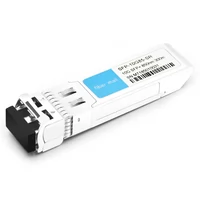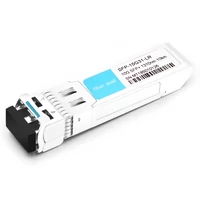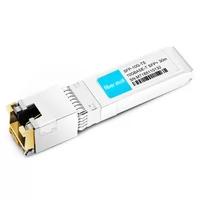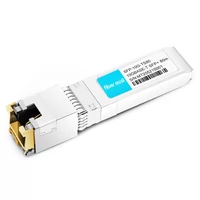Small form-factor pluggable transceiver modules from MikroTik are essential in improving network performance and connectivity. Network professionals must understand the compatibility and specifications of these modules as there is an increasing demand for fast data transmission and reliable networking solutions. This guide offers comprehensive information on the different MikroTik SFP transceiver options, their performance features, compatibility with various Mikrotik devices, installation best practices, and configuration. This knowledge aims to help readers make decisions to optimize their networks, whether they use SFP optical modules or antennas and accessories.
Table of Contents
ToggleWhat Are MikroTik SFP Transceivers?
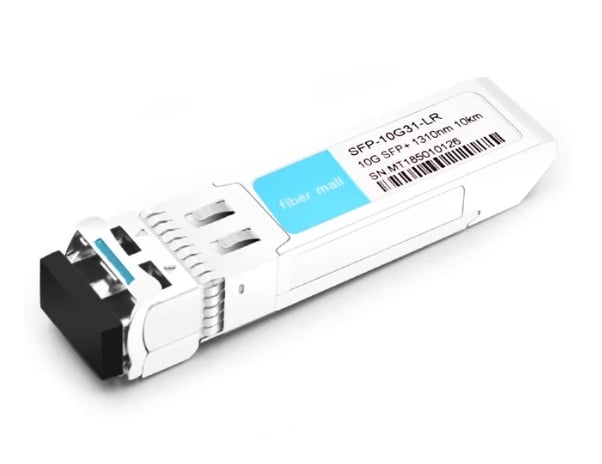
Introduction to MikroTik Transceivers
MikroTik transceivers are small, hot-pluggable devices that connect network equipment over different media and distances for fast data exchange. They are made to work with MikroTik networking hardware, such as routers and switches, to fit together perfectly. MikroTik offers several types of transceivers, including SFPs, SFP+s, and QSFP+s, which vary in the data rates they can carry and their maximum range. These versatile modules can be used in any environment – from small offices to large data centers – because they can handle fiber optic and copper cabling systems equally well. By supporting multiple communications standards simultaneously through a single physical connection point, these devices help improve overall performance while minimizing power consumption per bit transferred across the link.
Types of Transceivers Available
MikroTik supplies the SFP transceivers, which can be classified based on their data rates as well as the medium used for transmission. The main types are:
- SFP (Small Form-factor Pluggable): These typically have a maximum data rate of 1 Gbps and are usually employed in standard fiber connections over distances from a few meters to several kilometers, depending on specific optical standards.
- SFP+ (Enhanced Small Form-factor Pluggable): These modules support higher speeds than their predecessors with an upper limit of 10 Gbps. They can work with multimode or single-mode fiber cables, making them suitable for many networking applications, including data centers and enterprises.
- QSFP+ (Quad Small Form-factor Pluggable): This type merges four separate SFP+ channels, allowing it to support multiple data rates up to 40 Gbps. QSFP+ modules are intended for high-density applications, such as those found in HPCs or fast networking links.
All these transceivers interoperate with MikroTik networking hardware, so they’re flexible enough to be deployed across various networks, including those using MikroTik wireless systems.
Common Applications and Uses
Using SFP, SFP+, and QSFP+ transceivers is common in many networking environments because they are flexible and perform well. Some of these uses include:
- Data Centres: SFP+ and QSFP+ transceivers facilitate high-speed connections between servers, storage devices, and network switches for effective data transmission in data center architectures.
- Enterprise Networks: These transceivers form the backbone infrastructure in enterprises, allowing long-distance communication between devices while enhancing network performance.
- Telecommunications: Different segments within telecommunication networks can be connected using interfaces provided by SFP modules, which also seamlessly provide voice, video, and data services.
- Industrial Automation: Automated machinery and control systems are linked with these transceivers to enable real-time monitoring or information exchange within an industrial setting.
- Campus Networks: SFP modules ensure trustworthy high-speed internet access and intranet functions for users across several buildings belonging to educational institutions or corporate campuses.
MikroTik’s transceivers play a significant role in modern networking strategies and infrastructure development by providing flexible solutions for such applications.
How to Choose an SFP Module for Your MikroTik Router?
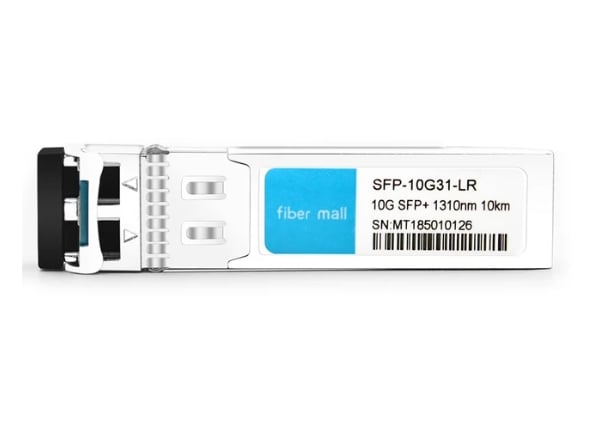
Understanding Compatibility with MikroTik Devices
It is essential to ensure that the SFP module for a MikroTik router is compatible with the exact model being used. The official product documentation will usually have a list of SFP and SFP+ modules supported by MikroTik devices. In addition, users are advised to check their RouterOS version since compatibility can change based on software updates. Also, it’s worth noting that MikroTik believes its own SFP modules should be used for best performance because they’re specifically made for the hardware. Visiting user forums or the MikroTik website will help individuals find verified lists of compatible products and experiences from others, which can guide them in deciding what to buy. On top of this, using third-party transceivers may result in unpredictable performance issues, so confirming interoperability before installation is crucial.
Key Specifications to Consider
When selecting an SFP module for a MikroTik router, it is essential to consider these specifications, including compatibility with MikroTik wireless systems.
- The data rate is essential when determining your network’s best SFP optical module.: Ensure that the SFP module supports required transmission speeds, such as 1 Gbps for SFP and 10 Gbps for SFP+ modules, which should match your infrastructure needs.
- Wavelength and Distance: Confirm the module’s operating wavelength, especially when considering a 10GBASE-T SFP module, as well as its distance capacity. Depending on different applications, single-mode or multi-mode fibers may be required, influencing choice based on the physical distance between devices.
- Connector Type: Ensure you check connector types so they are compatible with existing cabling. Common types include LC connectors used in fiber optics, where efficient connections must be maintained.
- Power Consumption: Consider the SFP module’s power requirements to ensure alignment with your router’s specifications, thus enhancing overall energy efficiency within environmental constraints.
- Temperature Range: The operational temperature range of the SFP module, particularly in industrial or outdoor settings, can be used to ascertain reliability under varying conditions.
These key specifications allow users to make informed choices that enhance network reliability and performance while ensuring compatibility with their MikroTik routers.
Comparison Between Copper and Optical Options
When assessing connectivity solutions in a network environment—especially for MikroTik routers—it is imperative to weigh the pros and cons of copper vs. optical SFP modules.
- Copper SFP Modules: Usually based on twisted pair cabling, these options are easy to install and have lower upfront costs. They can support standard Ethernet protocols over distances up to 100 meters, making them suitable for intra-building connections. However, they are more prone than other types of cables to electromagnetic interference and signal degradation at longer lengths, which can impact the reliability of your network.
- Optical SFP Modules: On the other hand, optical modules use fiber optics, enabling much greater transmission distances—sometimes several kilometers, depending on whether single-mode or multi-mode fibers are used. This makes them better suited for wider area networks (WANs) and inter-building links. However, they are typically more expensive and require careful handling so they don’t get damaged. Nevertheless, optical systems provide higher bandwidth capability and are immune to EMI, allowing consistent performance even under harsh conditions.
In conclusion, physical deployment requirements, such as distance budget climate, should guide your choice between copper-based or fiber optic SFP module options since this understanding will help you determine what best fits into your infrastructure, like antenna accessories, specific sfp optical, etc.
What Should I Know About SFP Transceiver Compatibility?
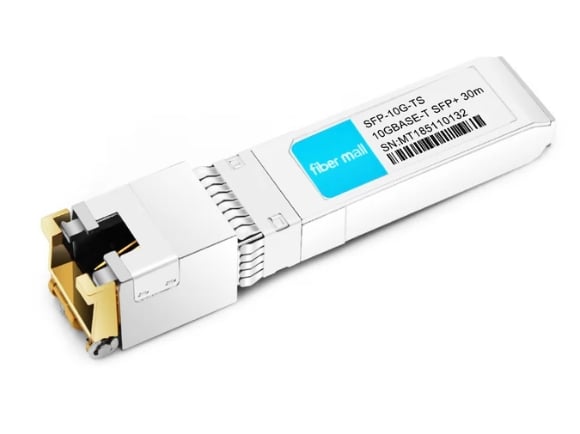
Compatibility with Non-MikroTik Devices
When dealing with non-MikroTik SFP transceivers, it is essential to consider whether they are compatible with specific network devices. In most cases, however, different manufacturers use industry-standard modules, which means that these can work on various networks. Unfortunately, some devices have vendor-lock policies, making them unable to accept third-party SFP modules. Thus, users are forced to use only OEM components if they want guaranteed performance and support.
To ensure the best compatibility, you should check out the compatibility lists provided by your device manufacturer and user experiences shared in community forums. Third-party modules are always available at lower prices, but before purchasing one, make sure its specifications, such as wavelength distance ratings or connector types, match those of your original module. Sometimes, firmware updates also improve compatibility between native transceivers, which is worth considering when mixing different network equipment.
Impact on Network Performance
Regarding data transmission speed, latency, and reliability, the selection of SFP transceivers can significantly affect network performance. High-quality SFP modules that comply with industry standards are necessary to reduce signal degradation over distance and provide robust connectivity. Conversely, poorly made or incompatible transceivers might add significant latency or packet loss that harms general network performance.
Moreover, the type of SFP module used (copper versus optical) will also determine maximum transmission distance and bandwidth capabilities. Optical SFP modules typically have more extended reach and higher data rates than their copper counterparts, making them more desirable for applications requiring intensive data processing over long distances. Hence, it becomes vital for network administrators to evaluate the particular performance demands of their programs before choosing transceivers that satisfy these requirements and align with hardware manufacturers’ compatibility rules. By prioritizing this step in selecting suitable SFPs, networks stand a better chance at improved performance levels and increased dependability while scaling up when necessary.
Ensuring Compatibility with 850nm and 10G Modules
A few factors must be considered when adding 850nm and 10G SFP modules to the network to guarantee compatibility. First, it is essential to ensure the transceivers can work at an 850nm wavelength, commonly used for short-distance optical communication. This particular bandwidth applies to multimode fiber usages in data centers and local area networks (LANs).
Next, one should check whether or not these SFP modules meet the requirements of the 10GBASE-SR standard, which defines short-range connectivity operational specifications. Compatibility revolves around physical features and extends to network equipment like switches and routers, which must accept such modules. Usually, this information can be accessed from manufacturers’ documentation or compatibility matrices.
For optimal performance, it is recommended that the transceiver be tested within its specific environment since different things might affect how well your setup works, including the type of fiber used, the quality of connectors, etc. Therefore, carefully choosing compatible 875 nm/10g modules and following integration instructions provided by makers will increase reliability and efficiency across optical networks among administrators who manage them.
What Are the Benefits of Using a 10G SFP Transceiver?
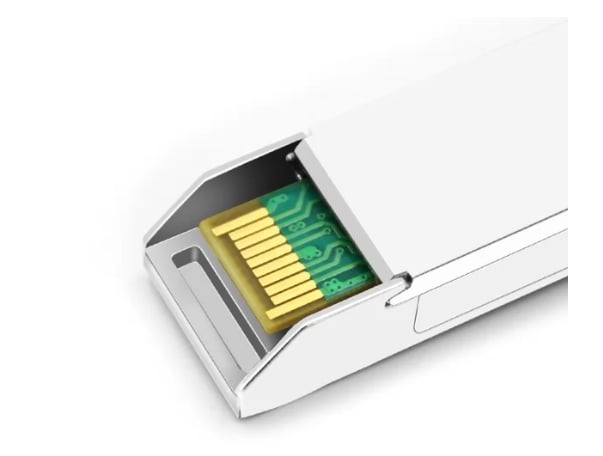
Advantages of 10 Gigabit Ethernet
10 Gigabit Ethernet (10GbE) SFP modules are becoming increasingly popular in today’s networking infrastructure because they come with several benefits. One of the most important features is its ability to increase bandwidth significantly, allowing for high data traffic, which is essential for applications such as cloud computing, video streaming, and large database access. This increased throughput minimizes congestion in the network, thus promoting the seamless transmission of information that results in a better user experience.
Another advantage of 10GbE is scalability, meaning networks can grow without replacing entire systems at a high cost. As demands for higher rates continue increasing, upgrading from one-gigabit ethernet (1GbE) to ten gigabits ethernet(10G) provides an efficient way to future-proof the underlying structure.
Also worth noting about this type of connection is its support for different types of media, including copper and fiber optic cables. This enables organizations to select cheap yet suitable wiring solutions depending on their needs. Additionally, the lower latency experienced in these links leads to faster responses, especially where immediate information processing is required.
Finally, an architecture based on ten gigabits per second simplifies design since complex settings associated with lower-speed connections aren’t necessary, easing overall administration and maintenance tasks around it. In conclusion, we have higher bandwidths, improved scalability, and flexibility within communication channels used by network designers who prefer simplicity over anything else when creating new systems.
The Role of S+RJ10 and S+85DLC03D Modules
The S+RJ10 module is a small form-factor pluggable plus (SFP+) transceiver designed to allow 10 Gigabit Ethernet over copper cabling. When used with high-quality Cat 6a or better cabling, it can support distances of up to 30 meters. Therefore, this module is perfect for high-speed connections within data centers not far apart or between adjacent network devices. This device provides an inexpensive plug-and-play solution that makes installation easy and reduces complexity in network configurations.
On the other hand, the S+85DLC03D module is an SFP+ transceiver working over single-mode fiber intended for long-distance use. With a distance of up to 40 kilometers, it enables wide-area networks or inter-building communication suitable for many applications, such as data center interconnects. The S+85DLC03D guarantees superior performance with minimal signal degradation, making it ideal in high-traffic environments where large amounts of information are often moved around. Together, these modules create more options when designing networks so that companies can better meet their specific needs regarding connectivity capabilities.
How Do Optical Multi-Mode SFPs Perform?
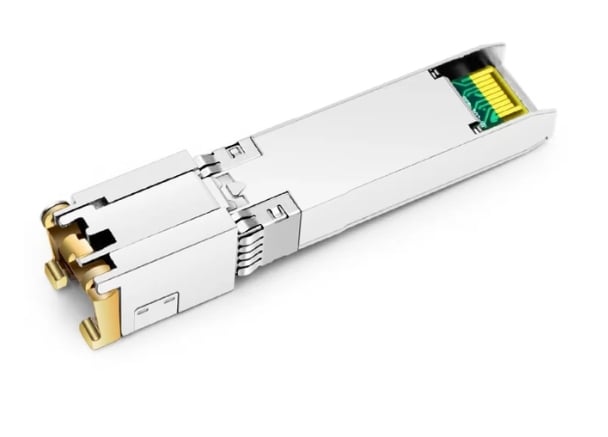
Benefits of Multi-Mode Fiber
Several benefits drive the choice of multi-mode fiber (MMF) for many networking environments. First, it is less expensive than single-mode fiber and its components like transceivers and connectors. Second, MMF has broader bandwidth support over shorter distances, thus being suitable in data centers or campus networks where the distance between devices does not exceed a few hundred meters. This feature enables efficient data transmission rates that are required by high-speed applications.
Also, due to its larger core diameter compared to other types of fibers, multi-mode fiber is easier to align during installation, reducing the complexity and costs involved in network deployment. Besides this, MMF can carry more than one mode of transmission, which increases capacity and improves overall efficiency in managing data traffic. Finally, multi-mode fiber technology continues evolving with new generations, such as OM5, providing improved performance capabilities applicable to upcoming technologies, including shortwave wavelength division multiplexing (SWDM). The combination of affordability, ease of installation, and reliable performance supports the ongoing use of MMFs within contemporary networking settings.
Understanding Meter Multi-Mode Fiber
Meter multi-mode fiber (MMF) is a kind of optical cable that means light can travel in many different ways over short distances. The core diameter for this type of fiber is either 50 microns for OM2, OM3, and OM4 or 62.5 microns for OM1, allowing multiple rays to propagate through it. Meter MMF offers high-speed data transmission over short distances as its main advantage, usually found in data centers, LANs, and enterprise environments.
The latest developments in Multimode Fiber Technologies led to the creation of OM5 fibers that support SWDM (Shortwave Wavelength Division Multiplexing). These innovations increase bandwidth capabilities, making them ideal for businesses intending to meet growing demands while still being cost-effective and having easy installation procedures required on their part. Adoption rates have been increasing steadily since then due to changing networking needs, confirming its importance within contemporary infrastructure systems.
Performance of 1.25G and Gigabit Ethernet Transceivers
Networking environments depend on 1.25G and Gigabit Ethernet transceivers for high-speed data transfer. In fiber optic networks, these transceivers enable smooth communication by converting electrical signals into optical signals and vice versa. They work over multimode fiber, with 1.25G supporting as much as 550 meters (m) and Gigabit Ethernet up to 300 m, depending on the type of transceiver used and the fiber employed.
Data centers and enterprise settings are increasingly using these devices because they can handle large amounts of traffic with low latency levels that remain constant. Digital diagnostics monitoring (DDM), a more advanced technology, increases performance by providing real-time feedback about the device’s status, which helps in preventive maintenance and troubleshooting. Higher capacity transceivers will be developed to support emerging standards and technologies to meet future needs for increased bandwidth demands.
Reference Sources
Frequently Asked Questions (FAQs)
Q: What are MikroTik SFP Transceiver Modules?
A: MikroTik SFP Transceiver Modules serve as hardware components that connect different network devices. These modules fit into the SFP ports of MikroTik routerboard products and Ethernet routers to allow high-speed data transfer over fiber optic or copper cables.
Q: Are MikroTik SFP modules compatible with non-MikroTik SFP devices as well?
A: Microtik SFP modules can also work with non-Mikrotik SFP devices, thus making it more flexible for incorporation into existing networks.
Q: How do I know if a MikroTik SFP module is compatible with my port?
A: Refer to their product specifications to confirm compatibility between your Mikrotik sfp module and the networking device it connects to. For instance, check whether they use similar data rates (Gbps), connector types (e.g., 850nm dual LC connector), or fiber types like multi-mode.
Q: Can MikroTik SFP modules be used with RJ45 ports?
A: Although fiber optics connections are mainly associated with these connectors, some copper ones convert sfp ports into rj45. This makes it possible for them to connect standard ethernet cables.
Q: What does DDM mean in microtik sfp transceivers?
A: Digital Diagnostics Monitoring (DDM) is what this abbreviation stands for. It enables users to track such factors as temperature , voltage levels, and optical output power, ensuring optimal performance from your sfp optical network transceivers.
Q: Why Are Customer Reviews Important When Buying A MikroTik SFP Module?
A: Customer reviews give you an idea of the MikroTik SFP modules’ reliability and effectiveness. They can aid in making informed decisions by pointing out possible problems and benefits noted by other users.
Q: What Types Of Optical Transceivers Can Be Used With MikroTik Devices?
A: Included among those offered by MikroTik are the short-distance SFP transceiver with 850nm dual LC connector and long-distance fiber transceivers intended for large network deployments. These work with different kinds of fibers at varying speeds (1.25G SFP, Gbps, etc.).
Q: How Do I Make Sure My SFP Interface Is Compatible With 100m Fiber Connections?
A: For compatibility between your SFP interface and hundred-meter fiber connections, select an SFP module that indicates support for multimode fiber links while also matching its data rate and wavelength to what is required on your network.
Q: Can One Use A Pair Of SFP Transceivers To Create A Direct Link?
A: Absolutely! You may use two compatible pairs of SFPS to create a direct optical link between any two network devices over their respective types of fibers, wavelengths, or data rates.
Q: What Are The Benefits Of Using MikroTik’s Modules On RouterBOARD Products?
A: Mikrotik’s sfp modules provide more options, faster speeds, and better connections for router board products like Mikrotik wireless systems, which work seamlessly with wired interfaces across many different setups.
Related Products:
-
 MikroTik S+85DLC03D Compatible 10G SFP+ SR 850nm 300m LC MMF DDM Transceiver Module
$12.00
MikroTik S+85DLC03D Compatible 10G SFP+ SR 850nm 300m LC MMF DDM Transceiver Module
$12.00
-
 MikroTik S+31DLC10D Compatible 10G SFP+ LR 1310nm 10km LC SMF DDM Transceiver Module
$18.00
MikroTik S+31DLC10D Compatible 10G SFP+ LR 1310nm 10km LC SMF DDM Transceiver Module
$18.00
-
 MikroTik S+RJ10 Compatible 10G Copper SFP+ 30m RJ45 without DDM Transceiver Module
$45.00
MikroTik S+RJ10 Compatible 10G Copper SFP+ 30m RJ45 without DDM Transceiver Module
$45.00
-
 MikroTik S+RJ8010 Compatible 10GBase-T Copper SFP+ to RJ45 80m Transceiver Module
$55.00
MikroTik S+RJ8010 Compatible 10GBase-T Copper SFP+ to RJ45 80m Transceiver Module
$55.00

